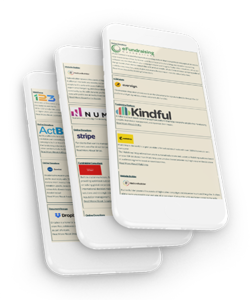The CA Form 497 has two main uses:
- Primarily, a 24-hour Contribution Report, which is required for contributions received -OR- non-independent expenditure made in the amount or aggregate of $1,000 or more, filed within the 90-day period before an election
- A 10-day report, required for single contributions received in the amount of $5,000 or more -OR- non-independent expenditures made in the aggregate of $5,000 or more, filed anytime outside of the 90-day period before an election
On the 497 report, the aggregate resets during the 90-day period.
Per the FPPC:
“A committee must file a Form 497 for each aggregated contribution of $1,000 or more from the same source. For example, if a committee reported a contribution of $2,000 on the Form 497 and later the same source made a $500 contribution, the Form 497 is not required as long as the contributor did not make future contributions that aggregated to $1,000 or more during the 90-day election cycle.“
To summarize:
If a committee receives a contribution after a 24-hour report is filed but that contribution amount does not reach the $1,000 threshold, another 24-hour report is not needed until that threshold is crossed again.
While the above clause talks about Contributions Received, the concept is the same for Contributions Made, so there is the same reset on Support/Oppose Memos.
When generating a 497 in ISPolitical, navigate to Compliance under the Reporting tab. On the criteria screen you will see the following fields.
Filer: Ensure the correct filer is selected if you have more than one Filer. If you only have one Filer (most common), then you won’t see this option.
Compliance Report: Select the CA Form 497 from the listed report types.
Compliance Report Version: Along with the Standard version, choose from various versions of the 497 report.
Limit to Specific Local Jurisdiction: This limits the report to Support/Oppose memo entities to the local jurisdiction. This is used by committees who receive/make contributions in multiple jurisdictions, and need to restrict a report to a specific jurisdiction for filing purposes. The Jurisdiction selected must EXACTLY match the associated jurisdiction (found in either Candidate or Committee Info) of the S/O Memo. This dropdown is commonly left blank.
Current Election: Select the current election the committee is participating in.
From Date: The From Date should always be the first day of the 90-day reporting period.
To Date: The To Date is the day you are running this report on.
If you are filing an amendment, check the Amended box. Two new fields will appear.
Amended Compliance Report: If you filed the original or previous 497 report outside of ISP, select the Filed outside of ISP option. Otherwise, select the report you are amending. This is list populated by reports that are marked as filed.
Outside/Optional Original Report Number: This is used for two reasons – if either you selected the Filed outside of ISP option. or if you supplied an Optional Report Number when generating the original report. This should NOT be your Original Filing ID – that is entered after the report is generated, and you select an efiling option.
Amendment Number: Use this field to specify which amendment this is. For example, if you previously filed two amendments, enter in the number 3.
Original Report Number: If your local agency requires your Report Number in a specific manner – chronological, etc. – enter that Report Number here. Otherwise, you can leave this blank and the report will assign a random number. This should NOT be your Original Filing ID – that is entered after the report is generated, and you select an efiling option.
After you’ve completed the fields, click the Generate button to generate your report. When it completes the process, review your report and, when ready, click E-File Report to State to send it electronically to the state, or, if available E-File Report to Local Agency. After you receive the confirmation the report was accepted, click the Mark As Filed button.
Clicking the Mark As Filed button will mark all transactions in the report as previously reported. This prevents transactions from being double reported later and provides an extra layer of protection from editing or accidental deletion.
How are contribution conduits reported?
For contributions received, when a transaction is received via conduit, unlike the Form 460, California does not require all of the conduit information. All that pulls to the 497 is an automatically generated note that states the transaction was received via a conduit.
For contributions made, California is really only concerned about the end recipient, which is the entity associated with the Support/Oppose Memo. The report doesn’t even disclose the original/parent entity.
How do I report Inkind Contributions on the 497?
From a reporting perspective, inkinds contributions are considered typical contributions.






